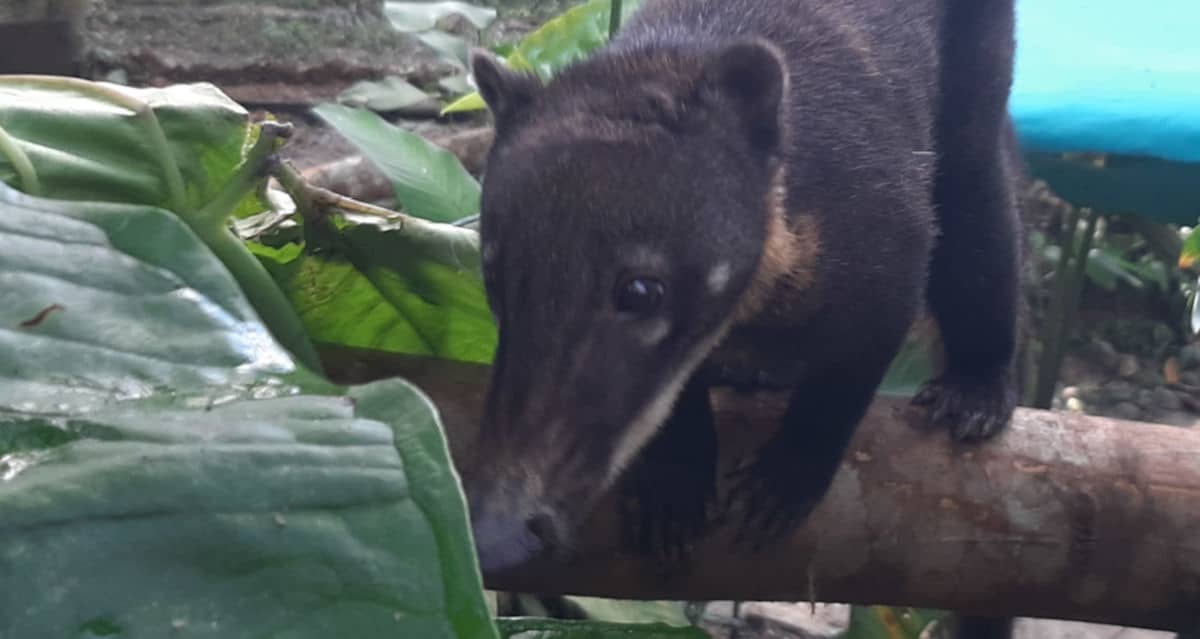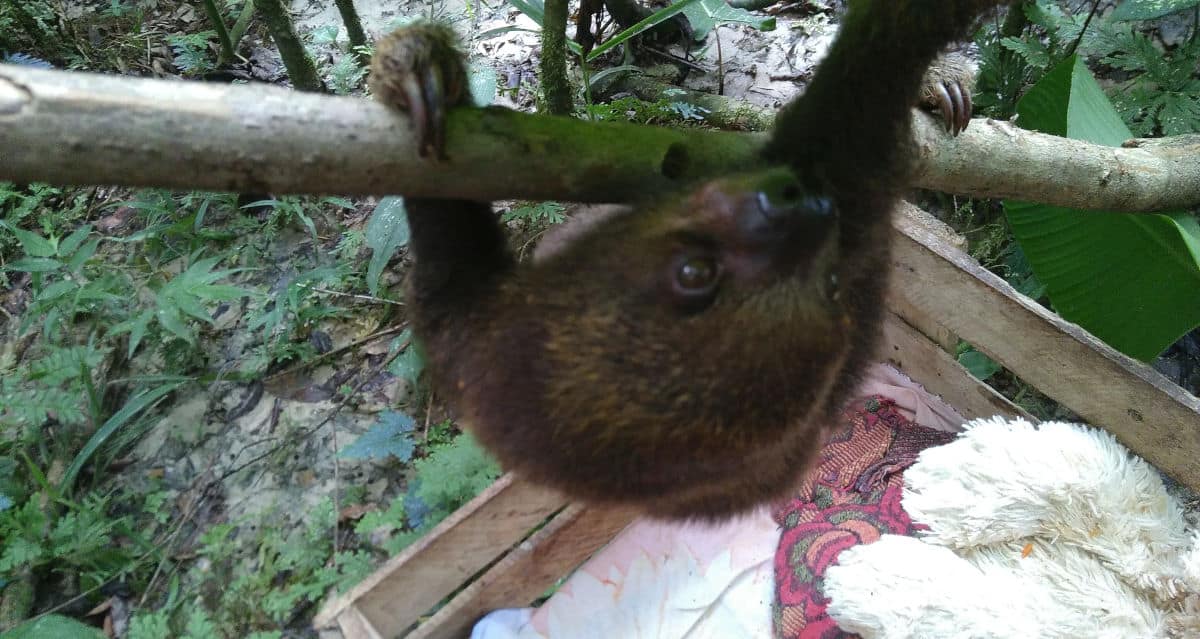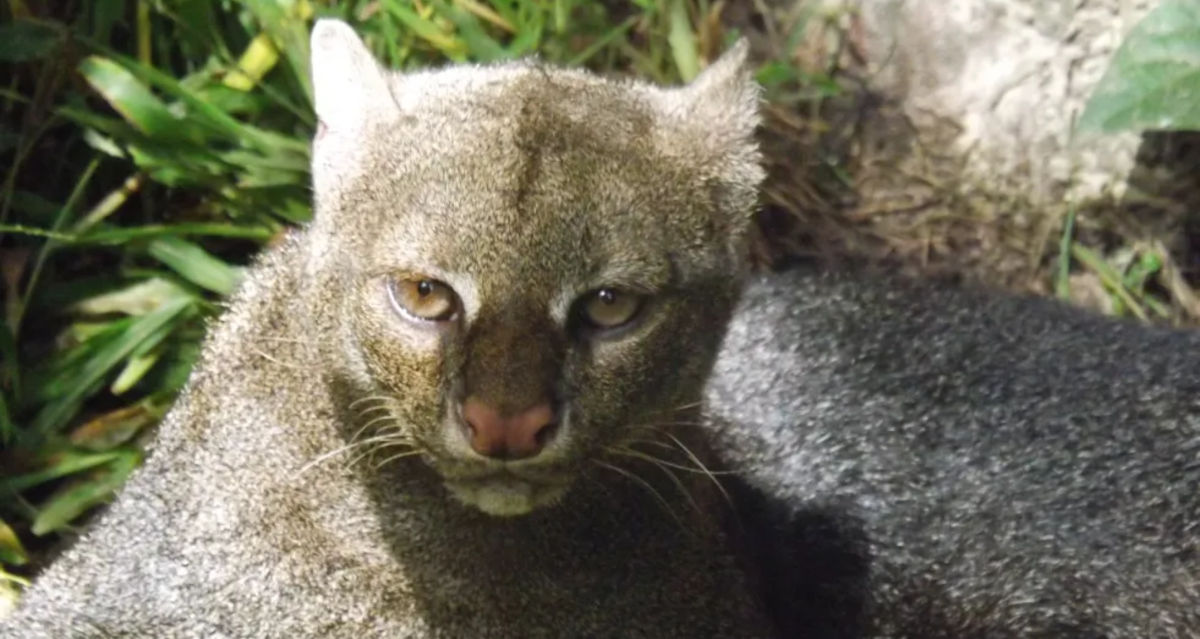Please welcome… Sultan – the South American Coati. The ecological police of Iquitos, Peru had given us this young male on Saturday, 11th March 2023. The new addition to Pilpintuwasi wildlife rescue and isn’t he just the cutest? (ESPAÑOL ABAJO)
Unfortunately, they are becoming an increasingly popular pet due to the Coati’s appearance (unusual and rather beautiful). The rise of pet trends is disastrous for biodiversity as it continues to fuel the illegal pet trade. Sultan, like many of our other Coatis, was surrendered by his “owner” after becoming too boisterous and wild .. after all he is a wild animal! He is roughly 3 months old, so still, a baby who would be dependable on learning skills from his mother and their band. A group of female Coatis is called a ‘Band’ – males live in solitary.
The Coati is a member of the raccoon family and has a distribution across tropical and subtropical South America ranging from Colombia and The Guianas south to Uruguay and northern Argentina. They typically live in forests (including evergreen rainforests, cloud forests, deciduous rainforests, and dry scrub forests) but are incredible at adapting to new environments and have been increasingly popular faces to be seen in areas of human development as they are successful scavengers.
Coatis feed by utilizing their long noses by poking them under rocks and into crevices in search of a snack. They also use their long claws to dig holes or tear apart rotting logs. This species is an omnivore, the diet consists of primarily fruits and invertebrates. They provide an ecological niche due to their diet, these animals affect insect populations in their range and act as seed dispersers of the fruit they consume.
The main threats to South American coatis include hunting for meat and habitat loss through deforestation. The IUCN Red List and other sources do not provide the South American coati total population size. Currently, this species is classified as Least Concern (LC) on the IUCN Red List but its numbers today are decreasing. We must protect our forests to help not only the Coati but the immense rates of biodiversity within.
Fun fact: Coati Dung Coffee produced in Peru is the most expensive coffee in the world. The excreta of the Coati is used to create this unique coffee.

Demos la bienvenida a Sultán, el coatí sudamericano. La policía ecológica de Iquitos, Perú nos ha dado este joven macho el sábado 11 de marzo de 2023. La nueva adición a Pilpintuwasi rescate de vida silvestre y no es simplemente el más lindo?
Desgraciadamente, debido a la apariencia del coatí (inusual y bastante bonito) se están convirtiendo en una mascota cada vez más popular. El auge de la moda de los animales de compañía es desastroso para la biodiversidad, ya que sigue alimentando el comercio ilegal de mascotas. Sultán, como muchos de nuestros otros coatíes, fue entregado por su “dueño” después de volverse demasiado bullicioso y salvaje… ¡al fin y al cabo es un animal salvaje! Tiene unos 3 meses de edad, por lo que todavía es un bebé que dependerá de las habilidades de aprendizaje de su madre y su grupo. Un grupo de coatíes hembra se denomina “banda”, mientras que los machos viven en solitario.
El coatí pertenece a la familia de los mapaches y se distribuye por Sudamérica tropical y subtropical, desde Colombia y las Guayanas hasta Uruguay y el norte de Argentina. Suelen vivir en los bosques (selva tropical perenne, bosque nuboso, selva tropical caducifolia, matorral seco, etc.), pero son increíbles adaptándose a nuevos entornos y cada vez son más populares en las zonas urbanizadas, ya que son buenos carroñeros.
Los coatíes se alimentan introduciendo sus largas narices bajo las rocas y en grietas en busca de un tentempié. También utilizan sus largas garras para cavar agujeros o desgarrar troncos podridos. Esta especie es omnívora, la dieta consiste principalmente en frutas e invertebrados. Proporcionan un nicho ecológico debido a su dieta, estos animales afectan a las poblaciones de insectos en su área de distribución y actúan como dispersores de semillas de la fruta que consumen.
Las principales amenazas para los coatíes sudamericanos son la caza para obtener carne y la pérdida de hábitat por deforestación. La Lista Roja de la UICN y otras fuentes no proporcionan el tamaño total de la población de coatíes sudamericanos. Actualmente, esta especie está clasificada como de Preocupación Menor (LC) en la Lista Roja de la UICN, pero su número está disminuyendo. Debemos proteger nuestros bosques para ayudar no sólo al coatí, sino también a los inmensos índices de biodiversidad que albergan.
Dato curioso: el café de excrementos de coatí producido en Perú es el más caro del mundo. Los excrementos del coatí se utilizan para producir este café único.


